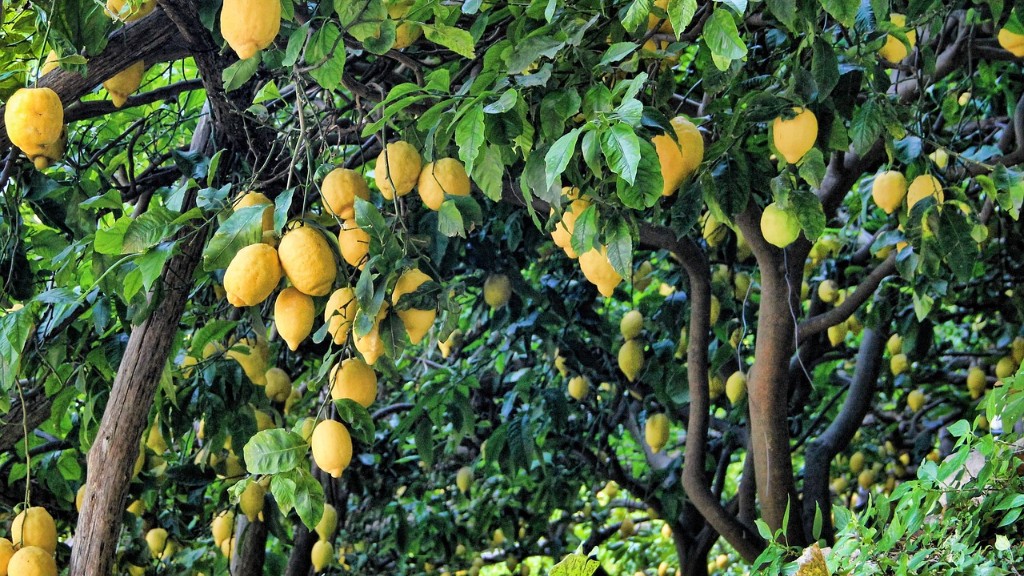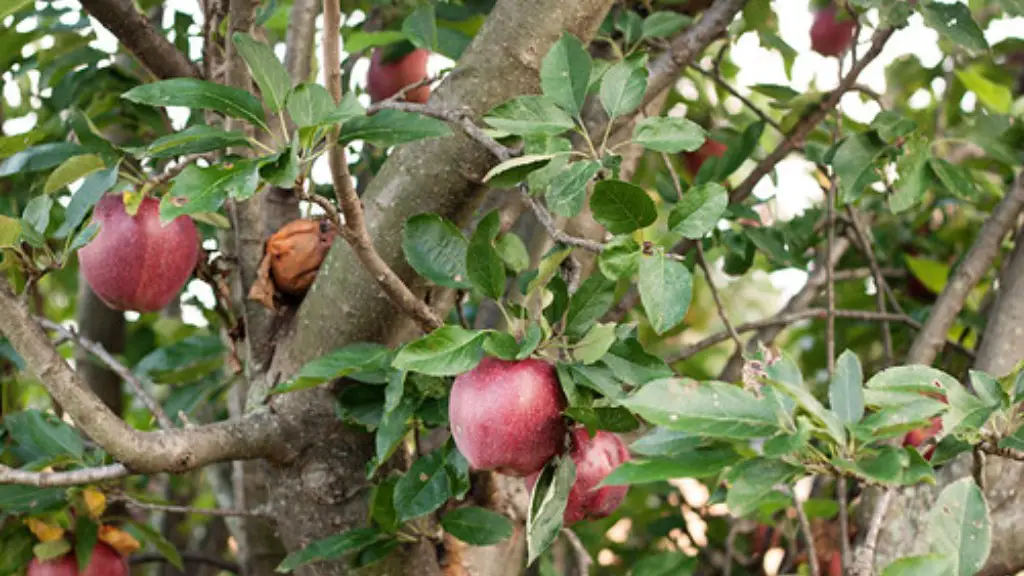Growing lemon trees can be quite the investment of time and energy. It is important to understand how long it will take before you can expect to see full-grown trees sprung up in your garden. Understanding the timeline of growing lemon trees is key to forming a successful lemon harvesting plan.
On average, it takes approximately four to six years for a lemon tree to reach maturity and begin producing fruit. Therefore, it is sensible to plan ahead four to six years in advance when planting new lemon trees if your goal is to harvest mature lemons from your own garden.
It is important to note, however, that lemon tree maturation will vary depending on the variety, planting zone, and the environment in which the tree is planted. For example, some dwarf lemon tree varieties are smaller and require less space than traditional full-sized trees. Because of this, lemon trees planted in warmer climates or in southern California can achieve full maturity after only three years.
In addition, a tree’s root stock also plays a major role in determining how fast it will reach maturity. Rootstock is the base portion of a tree’s root system, typically consisting of either a seed, cutting, or a seedling grafted onto a desirable root system. And while lemon trees grown from seed will take the longest, they will also be the most resistant to disease and the hardiest overall.
But bear in mind that while lemon trees grown from seed take the longest, they also require more care, monitoring, and pruning in order to ensure healthy maturation. For this reason, many gardeners prefer to plant lemon tree varieties with pre-existing rootstock, as these trees are generally faster to mature and better able to withstand the local climate.
No matter what variety of lemon tree you choose to plant, it is essential to take into account the climate in which it is growing. Lemon trees prefer warm and humid climates that are sheltered from wind and frost. If your climate is too cold, your lemon tree may take longer to mature or may not reach full maturation at all.
In conclusion, it will take between four and six years for a lemon tree to reach full maturation and begin producing fruit. However, this timeline can vary significantly depending on the climate and the variety of the tree, with some trees taking as few as three years to reach maturity. Therefore, it is important to consider these factors when planting and tending to your lemon trees so they can reach full maturity in the quickest time possible.
Growth Requirements
To ensure your lemon tree reaches full maturity as quickly as possible, it is important to understand the conditions required for healthy growth. Lemon trees thrive in locations that are warm and humid, while also sheltered from strong winds and frost. As such, it is important to find a climate that is suitable for your particular type of lemon tree. Additionally, there are a number of other factors to consider such as sunlight and soil type.
When it comes to sunlight, lemon trees require a minimum of six hours per day, with more being ideal. If your tree is receiving less than this, it may struggle to reach full maturity and thus take much longer. As for soil type, lemon trees prefer an evenly moist, loamy soil that is rich in organic material and is slightly acidic.
Furthermore, lemon trees should also be planted in an area that has adequate drainage. If the soil remains soggy and wet, this could lead to the development of root rot, which can impede growth and maturity. Lastly, it is important to ensure that your lemon tree is sufficiently fertilized, as this can help the tree to grow and flourish at a faster rate.
Pollination Requirements
Pollination plays a vital role in the growth of lemon trees, as it is essential for the production of fruit. Luckily, there is an abundance of pollinators that can help to activate flowers and aid in the pollination process. These include honeybees, bumblebees, and other beneficial pollinators.
Bee populations have been in decline in recent years, making it more difficult to ensure successful pollination of lemon trees. In such cases, hand-pollination may be necessary. Hand-pollination is a process in which pollination is done manually by taking pollen from male flowers and transferring it to female flowers. To ensure maximum pollination success, it is recommended that you manually pollinate the flowers of your trees once a week, during the blooming season.
Another way to ensure pollination is to create a pollinator-friendly environment by planting flowers and herbs that can attract pollinators to your garden. Additionally, providing pollinators with clean water and keeping weeds away from your trees can help, as this will improve the quality of your plant’s environment for pollinators.
Pruning Techniques
Pruning is the process of removing portions of a tree or plant to help maintain growth, shape and health. When it comes to lemon trees, pruning should be done regularly to encourage healthy branching and encourage larger fruiting. The pruning process should generally start in the first few years after planting and should be done twice a year – once in spring and once in summer.
When pruning a lemon tree, it is important to only remove dead, diseased or overgrown branches. It is also important not to cut too much off, as this can inhibit the process of photosynthesis and can lead to the production of smaller, less flavorful lemons. Additionally, dead branches should be cut close to the trunk of the tree, while living branches can be trimmed up to one-third of their original length.
Apart from pruning, lemon trees also require support in the form of stakes or cages so that their branches and fruits don’t fall and break. Trees should be staked early, before the tree has grown too small to be held in place by the stake. If a lemon tree is not staked properly, the fruit and branches can become overburdened, causing them to break during strong winds or storms.
Fertilization Process
Just like any other plant, lemon trees require regular fertilization in order to remain healthy and reach full maturity. It is important to understand when and how to properly fertilize, as this can have a major impact on the growth and health of your tree. Lemon trees should be fertilized three times a year, once in spring, once in summer, and once in winter.
When fertilizing your lemon tree, it is important to use a high-quality citrus fertilizer that has both nitrogen and potassium. It is also important to ensure that the fertilizer is safe to use and doesn’t contain any metals. Fertilizer should be applied in spring and summer at a rate that is recommended on the product label, while in winter it can be applied at a reduced rate.
In addition to fertilizing, lemon trees should be watered regularly and deeply so that the soil is evenly moist but not wet. If the soil is too wet, this can cause root rot and impede the tree’s growth. Instead, lemon trees should be watered at ground level, avoiding wetting the leaves of the tree to reduce the chance of diseases developing.
Pest Management
Aside from a healthy climate and proper fertilization, pest and disease management play a major role in helping your lemon trees reach full maturity. Several pests and diseases can affect lemon trees, such as citrus root nematodes, scales, mealybugs, citrus canker, and citrus greening, among others.
To prevent pests and diseases from affecting your trees, it is important to monitor them regularly and take any necessary measures. If an infected tree is found, it should be treated quickly and effectively to avoid further spread. Additionally, it is important to periodically clean the area around the tree of leaves and debris, as this can help to reduce the chance of disease.
Additionally, it is a good idea to use natural or organic pest repellents and deterrents to keep pests away from your trees. Other methods such as companion planting, traps, and beneficial predators also work to ward off pests and aid in disease prevention. Finally, it is important to remember that prevention is the key to pest and disease management, and it is essential to spot any signs of infection early on and take measures to prevent it from spreading.





